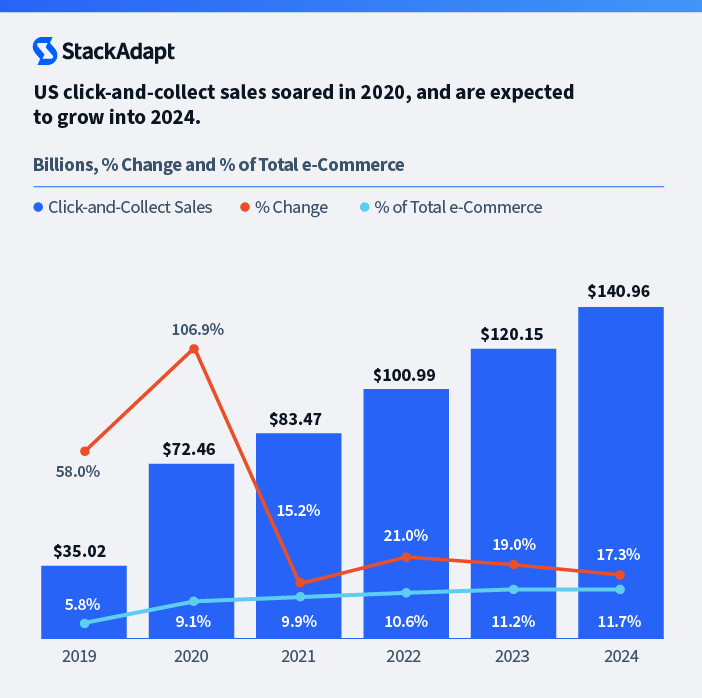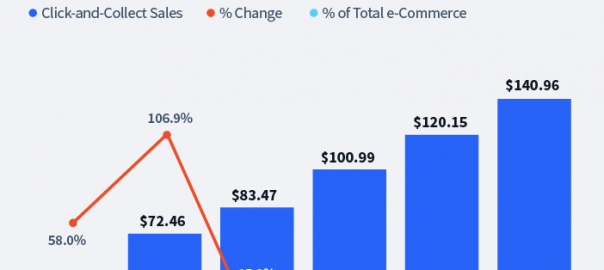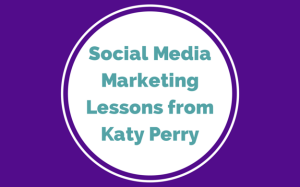If there’s anything marketers have learned in the last 18 months, it’s the importance of pivoting their strategies with confidence, and aligning with the behaviours of the target audience they are interested in engaging with. Because this approach will continue to be relevant, we’ve identified some of the key learning opportunities from the last year to help you navigate today’s unique challenges and seamlessly pivot your marketing strategies.
Stay Aligned With the Shift to Digital
Throughout 2020 and into 2021 we’ve seen a historic shift to digital. This shift is important for marketers to take note of because of the subtle impact it continuously has on consumer behaviour. Consumer habits never stop evolving, and by keeping a pulse on which channels are seeing the biggest change in digital, you can find ways to align with consumer expectations and trends.
Here are three specific areas where we’ve seen near- and long-term effects from the shift to digital:
More time spent with digital media.
Last year we saw unprecedented growth in time spent with digital media: 15% YoY. This growth was driven by pandemic-related lifestyle changes. With so many people staying at home because of health restrictions, video streaming, connected TV (CTV) and smartphone use increased. In the US, the average adult added 1 hour of digital consumption to their daily media time. This trend is likely to persist in 2021 as consumers have indicated that they will continue spending time on activities like online streaming (67%) and fitness (60%).
Subscription services and cord-cutting.
Increased use of digital media also led to more cord-cutting. More than one-third of US consumers added new subscription video-on-demand (SVOD) services during the pandemic, while the percentage of those who “cut the cord” increased 28.2%. It’s now projected that US cord-cutters will grow annually at double digit rates well into 2024.
Adoption of e-commerce.
This shift to digital also influenced online shopping. While ordered to stay home, consumers turned to online shopping channels. As a result, US e-commerce sales increased 32.4% YoY to a record $ 791 billion. Online shopping has become a habit, especially for consumers enjoying the convenience of alternative fulfillment methods like click-and-collect. Unsurprisingly, in-store sales were impacted as closures and public safety concerns caused brick and mortar retail sales to drop 9% below Q2 of 2019. Now, more than three-quarters of Americans have tried a new shopping behaviour, shifting to e-commerce, and most intend to continue usage beyond crisis.

Leverage Channels That are Growing
Two channels in particular have experienced impressive growth since the start of the pandemic areCTV and audio. Both of them grew in part because of the changing habits around digital media consumption that we mentioned above. A large number of consumers have shifted to streaming video and audio, which means now is the time to leverage the channels that reach consumers through those digital platforms.
Programmatic Audio
With people spending more time at home, and looking for ways to be entertained without having to look at a screen, digital audio saw a boost in adoption over the last 18 months. For example, audio is a great way to multitask while working from home, which has led to more scalability in this channel this year. In 2021, digital audio accounted for 11.7% of total media time among US adults. Digital audio subscription revenue has seen double digit growth in 2021 driven by exclusive content and expansion into podcasts.
The relevance of digital audio is especially noticeable when you look at ad spend. Digital radio ad spend fell 17% to $ 3.72 billion in 2020 while podcast ad spend grew 10.4% as the number of listeners boomed and podcasts became an attractive advertising platform. Sixteen percent of digital radio ads were transacted programmatically in 2020 and spend is expected to surpass $ 1.05 billion by 2022.
Connected TV
Connected TV (CTV) is quickly becoming a widespread mode of media consumption, and digital marketers are taking notice of the opportunities in CTV advertising. The pandemic helped to accelerate the growth of CTV, as people stuck at home looked for new ways to stay entertained. As consumers flocked to streaming online, CTV advertising soared with ad spend growing 27.1% to $ 4.53 billion in 2020. This growth is expected to double by 2024 as CTV is expected to be found in 4 out of 5 US households by the end of 2021.
Audio and CTV both present great opportunities to evolve your campaign strategy in a way that reflects changing media consumption habits and therefore, keep your campaigns relevant. Use a cross-channel strategy that includes CTV and audio, so that you don’t miss out on reaching this engaged and growing audience.
Introduce Tactics That Thrive in Cookie-free Environments
Cookies are being phased out in some environments, and are becoming more prominent as the forefront of consumer consent on many digital pages. This changing sentiment isn’t a trend that’s driven just by the pandemic. It was in motion well before, and privacy awareness is now becoming a consumer norm.
This doesn’t mean audience targeting is going anywhere—it’s just evolving. One solution for adjusting to new privacy regulations is to begin testing new tactics for targeting and measurement in a privacy-focused advertising future where cookies will not be omnipresent. This will help you to stay aligned with changing expectations and legislation.
Here are two strategies you can start testing, now:
- Use cookie-less tactics: Focus on using solutions that are inherently cookie-free, like IP address targeting and contextual targeting. Use contextual targeting to target people based on web browsing content and capture focused audiences based on intent.
- Leverage 1st-party data: Run PMP deals with publishers who have access to unique 1st-party subscription data. You can also leverage transactional data to capture these users by building retargeting and lookalike audiences.
Build Your Digital Marketing Strategies Around 2022 Consumer Trends
Consumer trends will continue to evolve into 2022. Leverage data-driven analysis to inform your strategies moving forward. This will keep you ahead of shifting consumer behaviours—that have forever changed—to yield the best digital advertising results for your company.
To learn more actionable recommendations that will help you navigate the current digital landscape, download our full guide Evolving Beyond the Crisis: Consumer Trends and Digital Marketing.
Digital & Social Articles on Business 2 Community
(41)





